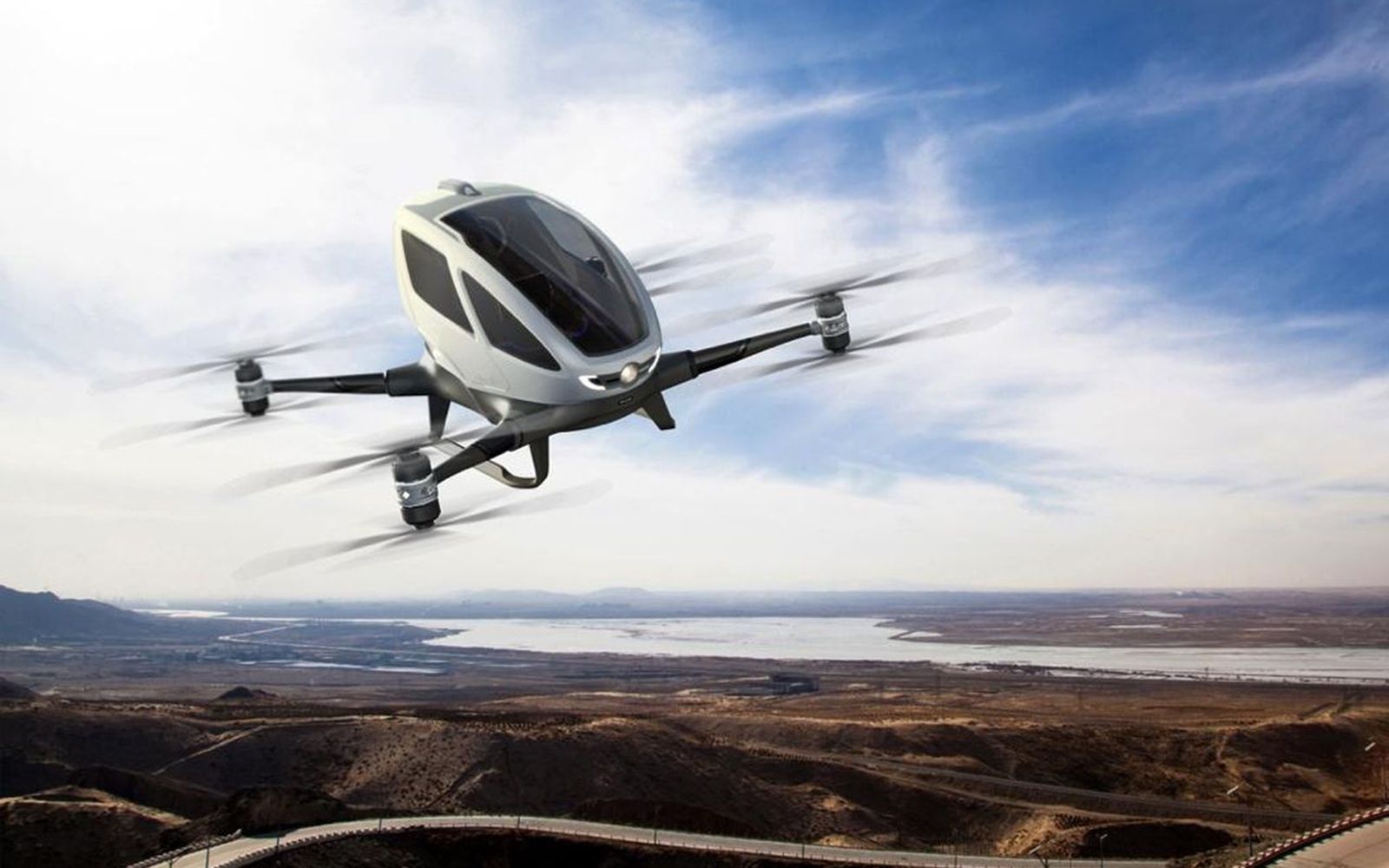There are drones and then there are drones that can fly people, well there's only one actually, the Ehang 184.
Shown off at CES 2016 in Las Vegas the quadcopter is built large enough to carry a human passenger, with no controls or pilot.
The Ehang 184, a Chinese company invention, is able to reach speeds of 63mph and fly at heights of up to 11,500 feet. It can carry up to 100kg, so a person and a bag, for up to 23 minutes of continuous flight.
You're not going to get much further than 20 miles, although in a straight line that's a good distance for a commute. For those living in the mountains, near lakes or in remote locations this could be a great way to increase access.
- The best drones 2018: Top rated quadcopters to buy, whatever your budget
- Drone flying in the UK and US: All the rules and regulations explained
- Best drone photos ever: Stunning images taken from up high
That said, don't expect to see too many of these zipping about the skies just yet. Laws are still unclear on drones, let alone ones that carry humans. Plus there's an expected price tag of between $200,000 and $300,000. But it's exciting to see where personal transport could be headed.
The controls are inputted via a tablet and simply involve pressing "take off" and "land", having set a waypoint. The Ehang 184 does the rest. The passenger can also control climate and lighting internally using the touchscreen interface.
Ehang's creators say they're planning to implement a human remote control centre where a person will be able to take control of the drone should any issue arise. If one of those issues is a loss of connection with remote controls we'd image there's little the passenger could do. Ehang says its core ethos is about "absolute safety by design".
The drone has been flown more than 100 times at low altitude in a forested area in Guanzhou, seven of those times a person was onboard. The company said that even if three of the four arms had their six propellers compromised the drone could still land, spinning to the ground, with one arm's propellers.
Whether the drone is able to recognise and dodge obstacles is not clear but presumably it must be able to, you'd hope.
READ: This is the Samsung Family Hub Refrigerator that is rocking CES 2016

